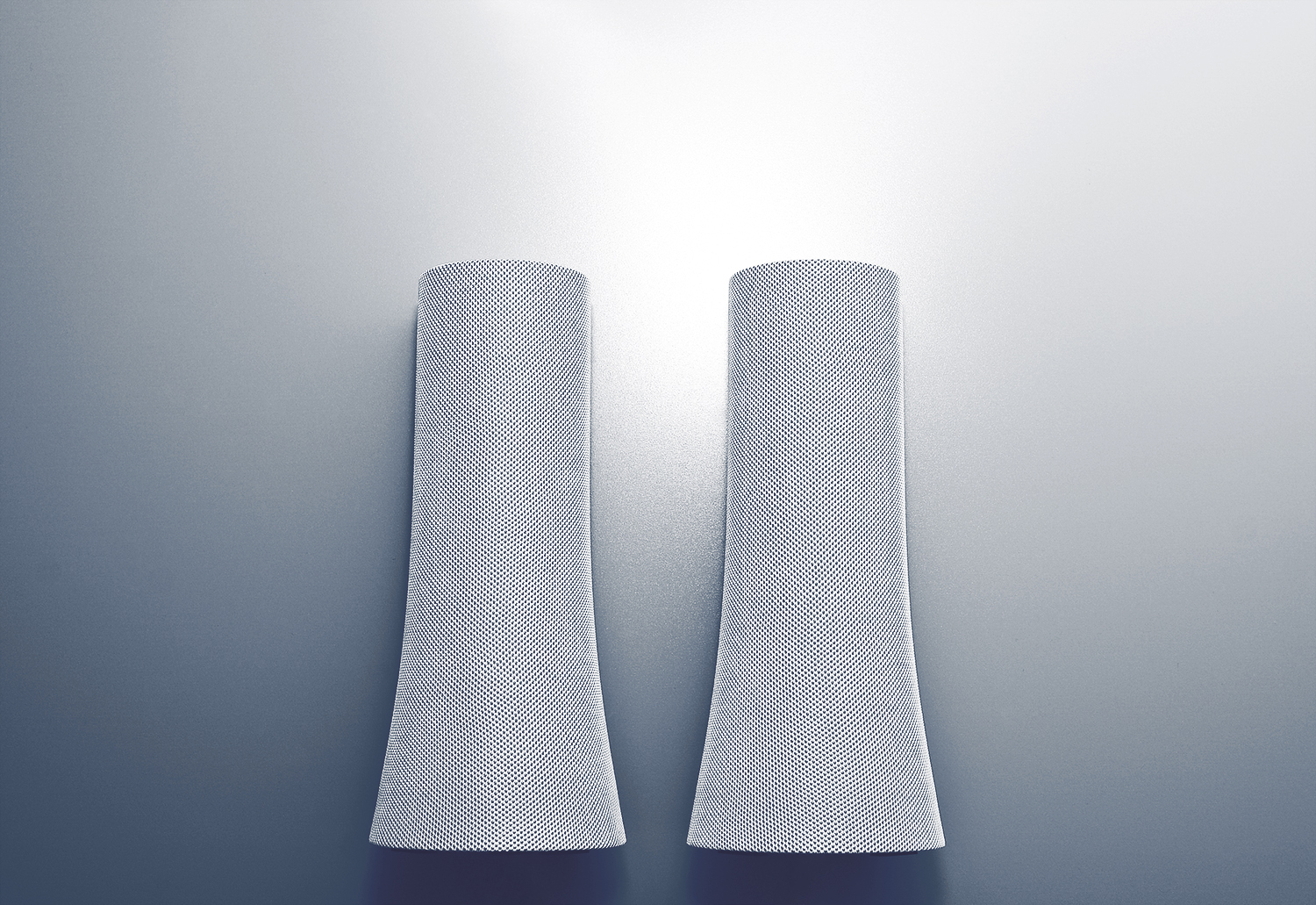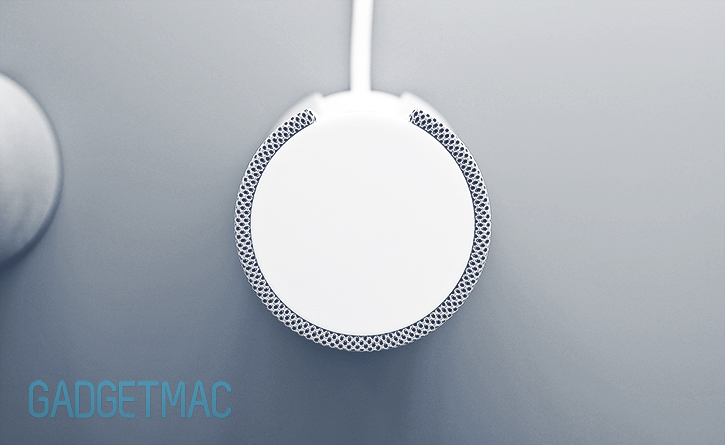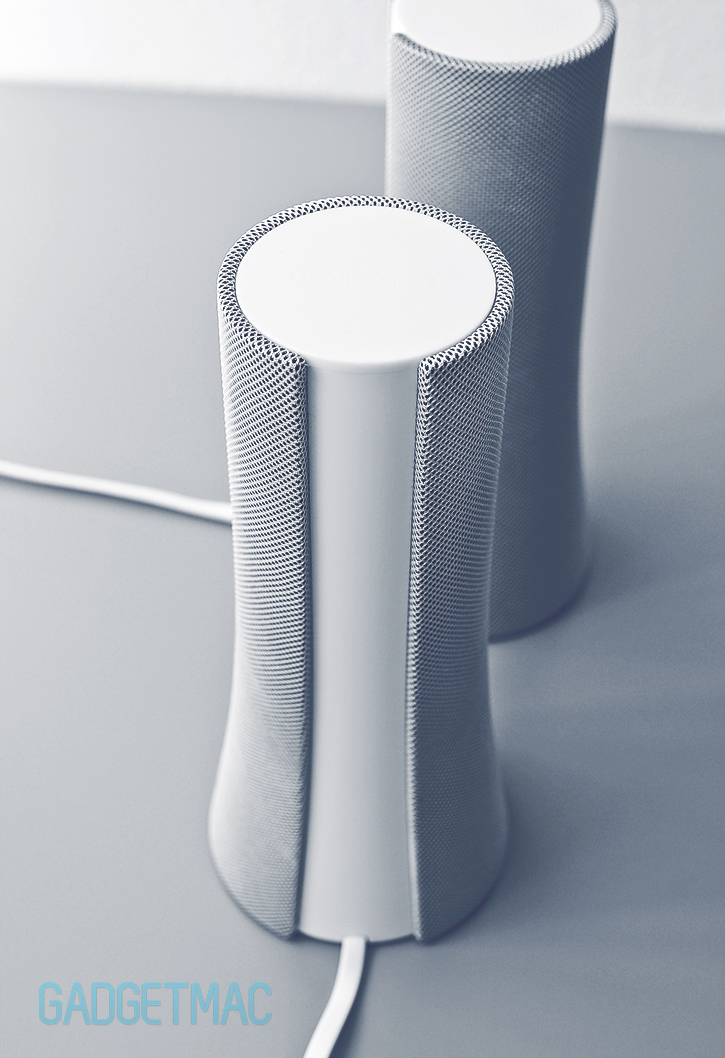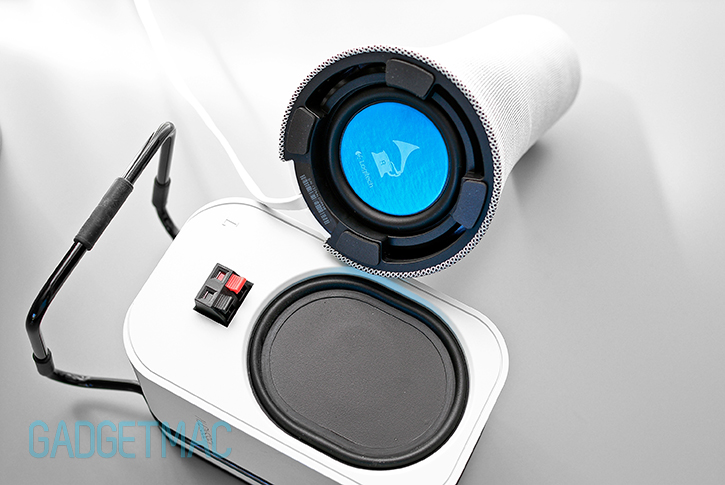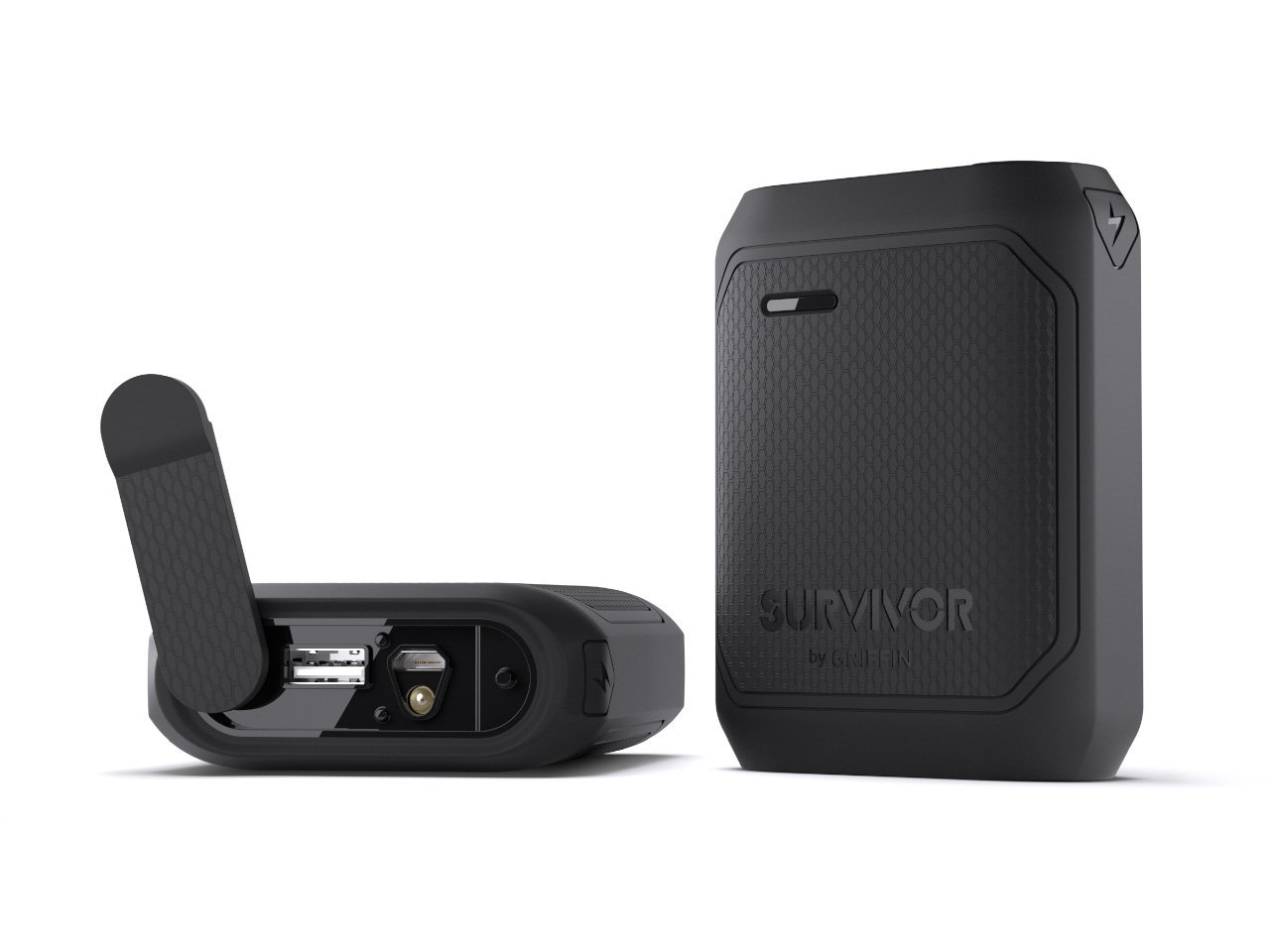Logitech Z600 Speakers Review
/Just as we've got done drooling over the phenomenally outstanding UE Boom wireless portable speaker, Logitech has introduced another wirelessly detached apparatus designed this time for indoor use, preferably placed within a stationary computer setup. Logitech's new Z600 are a pair of stereo wireless Bluetooth speakers that although aren't designed for portable use, can be wirelessly paired with up to three devices simultaneously like a tablet, laptop, Desktop PC or smartphone no matter what brand they originate from. With an unconventional stylish pillar design and a silvery fabric finish that'll compliment any Mac, the Z600 speakers each feature three drivers arranged to throw immersive 360-degree sound inspired by the UE Boom. Will these twin towers of wireless audio freedom have what it takes to embellish your desk with their powerful, albeit minimalist presence? We've got your answer plus more in our comprehensive review down below!
Affordably priced wireless speakers with first class styling and space-saving design
The design is...clean, but may remind you of exactly the opposite. And what I mean by that is that the Z600 have this glowing, almost nuclear plant-esque styling to them which is reminiscent of power plant towers. It is awesome though and certainly a design that's out of the ordinary, maybe even worthy of some kind of a consumer electronics trade show award. This fantastically minimalist and forward-thinking design does have something in common with Apple's Mac design language, but perhaps the silver color is what really sets the Z600 as aluminum-friendly aesthetically speaking. When looking at the Z600 the first thing that comes to mind is their muted, blank svelte facade that envelopes each speaker tower which is void of any imperfections that would be considered as buttons, switches, LED lights or even branding.
Browsing through Logitech's speaker lineup reveals an all- black, typical bunch of PC influenced designs that aren't up to modern times. Logitech has made honorable advancements with their portable speakers, and the same can be said when looking at the Z600. Logitech was smart to throw a bit of UE Boom styling elements at the Z600 as they share a similar rounded, cylindrical shape that's albeit tapered towards the end in order to accommodate down-firing passive radiators which results in this power plant tower-esque design I absolutely think looks awesome and ominous at the same time.
The Z600's unusual shape isn't entirely unique when being reminded about the existence of AltecLansing's Octane 7. That being said, there's enough visual difference that separate the two apart. The closest desktop speakers that have an equally visually stunning aesthetics would be Harman Kardon's tried and true SoundSticks wireless Bluetooth speakers which have for long been a marvel of speaker design partly due to their see-through design.
Each Z600 speaker tower is shaped very similarly to the UE Boom with the exception of a much bigger and taller from factor that's sleeker. Both speaker towers measure 9.5-inches tall and are used at a vertical, self-standing posture which not only takes up very little desk space compared to other all-in-one 2.0 speakers, but is also ideal for spreading 360-degree sound that's evenly matched by the UE Boom.
Unboxing the Z600 may not be as thrilling as opening up the UEBoom's pod shaped packaging, but at least the Z600 come neatly packaged inside frustration-free modular interior. Lift up the accessory tray and you'll be greeted with the two speakers waiting to be pulled out to be set up. What I wasn't expecting to find included with the Z600 is Logitech's ever so iconic, USB nano wireless transceiver which the company uses for most of its wireless peripherals as well as a 3.5mm to 3.5mm audio cable. The two can be used as alternative solutions for connecting the Z600 to different audio sources, mostly those which don't have Bluetooth connectivity.
Also in the box is probably the ugliest, most bulky wall power adapter I have ever seen. I mean look at this thing, it looks like the humpback whale of power adapters. Maybe the Z600 really are nuclear by the looks of the size of this power supply. This has me questioning Logitech's odd thinking here. At least it's well rounded though and because you won't be traveling with it, who really cares right? Well, you should because this thing is so badly designed that it partially blocks the second wall outlet even when plugged into the bottom one. It's awful especially when you find out the second outlet can't be used because of such a design flaw.
It gets even more unusual as you start to connect the dots. For speakers that are wireless there sure is a whole lot of cables that you need to put together. But bare with us here, the Z600 need to be plugged in to a power source that's not going to change as far as wireless desktop speakers are concerned.
And like the Audyssey Wireless Bluetooth Speakers we've reviewed, the Z600 also need to be connected to each other. Each speaker has a flat cable running out of its back. Each has its own female and male plug which you'll need to piece together to form a brick-like connector you then plug together with the power adapter plug. This whole proprietary Lego-esque connection isn't hard to put together, but it sure isn't very normal. I'd give Logitech props for coming up with it, but it's overly complicated. And seeing that the left speaker unit doesn't require any power by just using an analog audio connector that sends the audio signal from the Bluetooth connected right speaker unit right back to it, Logitech could have saved us this entire secondary interconnecting cable by making both units truly wireless.
So in the end, you're not really freeing yourself from cables with the Z600, but you are gaining a wireless connection between your computer and the speakers which will be most useful when you're using a laptop or a tablet in between uses.
Not award-winning or premium in any way, and pretty basic as far as the materials used in the Z600's construction. Yet they're definitely assembled really well for a pair of desktop speakers. And although not as great as the tightly packed and ruggedized feeling of the UE Boom, the Z600 don't disappoint on the built quality front just as they don't with their svelte styling. Like the autonomy of an Apple product, the Z600 have no visible screws or seams around each speaker giving them a clean and sophisticated look that from afar makes people think they're extremely expensive. I'd say the Z600's price tag merits they're refined qualities in a perfectly acceptable way which will leave you with nothing to complain about.
That white strip running down the back isn't the same kind of rubber material used on the UE Boom, and even the fabric mesh isn't as durable and tough as it is on the UE Boom as I hoped it would. Instead, the Z600 feature a white colored hard plastic that's matte and slightly textured in finish while the silvery gray fabric mesh covering most of each speaker isn't designed to protect against water, but also like the UE Boom, can't be pressed back into the speaker or torn accidentally.
The Z600 are respectively contemporary when it comes to bells and whistles, however, Logitech has done some really nice things in order to keep a very minimalist design that isn't without function. The white top located on the right speaker tower is actually a touch-sensitive volume control dial which works just like the iPod touch-wheel control. Swipe your finger in a circular motion around the edge in either clockwise or counter clockwise to increase or decrease the Z600's volume. It's surprisingly intuitive to use and works flawlessly in gradually adjusting the volume without the help of any mechanical moving parts or manual labor.
Surrounded by the touch volume control dial is a blue LED status light which only ever shines once you power on the speakers, or blinks during a pairing process and then blanks out so that no light will ever become a nuisance during the night. Tap the touch panel if you'd like to know whether the speakers are on which will be confirmed with a affirming tone. It's also worth noting that when idle, the Z600 don't have an annoying hissing noise that's present in many desktop speakers and are completely stealthy in terms of lighting effects which is a welcome omission many people will appreciate.
Hidden behind the right speaker tower is where you'll find the power on/off and Bluetooth pairing buttons along with an auxiliary 3.5mm audio input and a micro-USB service port. I would have liked to see the inclusion of at least a treble adjustment control, or even a bass adjustment control in a perfect world. Alas, none of these are here and you'll wish they were as you'll find out from our sound quality assessment.
There are three ways you can connect the Z600 with an audio device, and all three of them are supported by Mac OS X, iOS, Windows in general and Android. You can obviously use Bluetooth to wireless pair your device with the Z600, or if you haven't got a device that supports Bluetooth, you can plug in the wireless USB nano transceiver instead if you're using a PC or a Mac. When plugged, in the USB transceiver will automatically pair the speakers with your computer without requiring drivers or additional steps. Lastly, the included auxiliary 3.5mm to 3.5mm audio cable offer the simplest wired connection you can make between the Z600 and for example your TV, or Walkman if you're really old school.
Logitech has always done a phenomenal job at putting extra effort into making sure they're Bluetooth speakers are pleasing to setup. In that of course applies to the Z600. Some of Logitech's UE speaker DNA has been put into the Z600 in areas where the user interacts with the product such as powering on the speakers, pairing them or when wanting to know a status of some kind. Where the UE Mobile Boombox and UE Boom played out instrumental chimes that would audibly indicate different functions, the Z600 have an entirely different tone that sounds more artificial and electronic in a really tasteful way that adds another touch of polish to the Z600 which Logitech is known.
Logitech has equipped the Z600 with these flat tangle-free cables which I don't think really matter in such a fixed setup, but having them there does lighten the fact that your wireless speakers have cables running behind them.
In case you wondered what they look like underneath, the Z600 have a left and a right label to help you position them correctly without ruining they're clean design straight out of the box. The labels are put directly on top of the down-firing passive radiators, and while they look like stickers you need to remove, they're in fact part of the drivers and should not be removed.
So how do the Z600 sound? Imagine having two UE Boom speakers set at a stereo configuration, but with a little more horsepower. These aren't high-end speakers if the price hasn't spoiled it for you already, thus the sound isn't going to be anything remarkable. Nevertheless, the Z600 perform excellently around the $150 price mark as they've got impressive loud sound that's crystal clear across the board for a pair of affordably priced, handsomely unique wireless speakers. They've got a sound signature that's clean and sterile to laboratory requirements which closely resembles that of the UE Boom. Overall, the Z600 are very bright and sound light on their feet with exceptional highs that bring out vocals with extreme clarity and sparkle. Sadly, bass isn't their forte.
Another note worthy pair of wireless Bluetooth speakers are Audyssey's highly underrated Wireless Bluetooth Speakers which although have an MSRP of $300, now just cost around $140 - enough to whip up a quick comparison we think. You may not hear a strong bass presence coming out of the Z600, but you'll definitely feel the smooth low vibrations when working at your desk because of those down-firing radiators. Fortunately, the Z600's mids and highs are both detailed a touch more compared to the Audyssey Wireless Bluetooth Speakers. Another noticeable difference between the two is the 360-degree sound output of the Z600 which makes the Audyssey speakers sound a lot more directional and narrow-sounding compared to the wide depth that you get when listening to the Z600.
And while there is a significant resemblance between the Z600 and the UE Boom which share a very similar sounding sound signature, the Z600 are of course more powerful and have better defined imaging and depth to how they sound in comparison. Not to mention an improved low response and a slightly more detailed midrange over the UE Boom which just results in a richer sound experience fit for desktop use. But it just shows you how capable Logitech's and Ultimate Ears' UE Boom really is as a portable wireless speaker, and naturally we had to compare the two against each other.
Oddly enough, the bottom low end sounds much better than the higher bass definitely sounds better as it gradually moves down towards th bottom low end on the Z600. When listening to Adele'sSkyfall, during the first few second leading up to the chorus, there's a strong introduction of lows that the Z600 deliver really nicely to a point where you can feel the bass vibrate through your desk straight down to the floor and right back at you. Mostly due to the fact that the Z600's bass radiator drivers face very close to the surface instead of firing backwards which is typically what you'd find in a lot of compact speakers with built-in passive radiators.
Passenger's Let Her Go being an acoustic heavy track lead by bass guitar strumming in the background still sounds amazing and filled with life-like foreground clarity to vocals with the Z600.
Without even comparing the Z600 against Audyssey's underrated wireless desktop speakers, they definitely lacks punchier, deeper lows. However, I think they make up for it with incredible highs and a midrange that's well defined in its own right but not as pronounced as the highs are which can also say that the Z600 have a treble-heavy sound signature that's light and creamy like fat-free whipped cream.
It becomes clear why the Z600 have under powered bass performance when comparing them against the Audyssey Wireless Bluetooth Speakers. The difference in size of each passive radiator is significant. The only downside to Audyssey's Wireless Bluetooth Speakers is that their bass response often times drowns the mids which is exactly the opposite when listening to the Z600.
If you like a natural, bright sounding sound signature that leaves a smile on your face when you listen to your music playlist, you'll love the Z600 and everything else that tags along like refined design and user-friendly features that are the cherry on top of a well polished package. If only the Z600 handled bass with more umph, we would have picked them for an Editors' Choice Award. Because at $150, you can't go wrong with the Z600. We don't think Bluetooth connectivity is of great importance at a desktop environment, but if you plan on using the Z600 wirelessly with portable devices from time to time, then you'll be hard pressed to find a superior alternative that can balance clean, powerful sound quality with a striking contemporary design that's as versatile as it is functional.
Then again the Z600's poorly designed power adapter and wired speaker tower configuration are unfortunate flaws. And if you want more thump, Audyssey's Wireless Bluetooth Speakers are a fantastic alternative if you want better bass performance so long as they still sell at around $140, however, they're not as minimalist as the Z600, aren't omnidirectional, aren't as user-friendly in terms of Bluetooth functionality and also require a tethered speaker configuration. Both speakers can be used with multiple devices including TVs and gaming consoles which is always a plus. All things considered, we like what Logitech has done with the Z600 and so they earn a solid recommendation from us.






